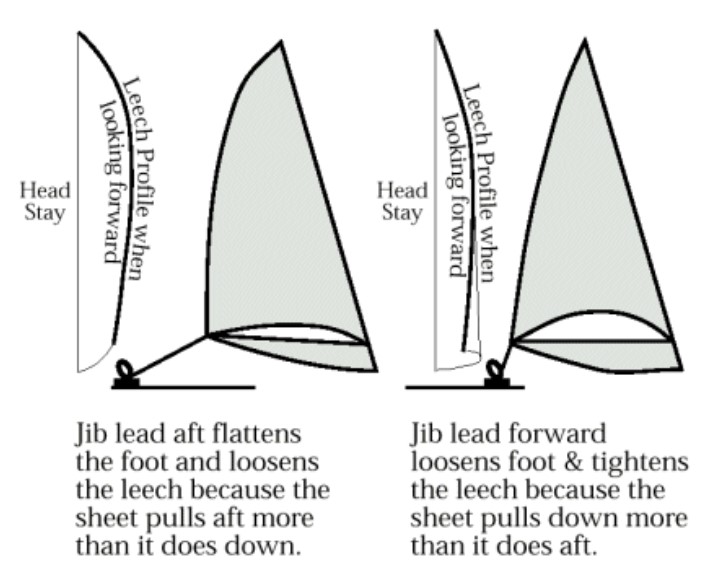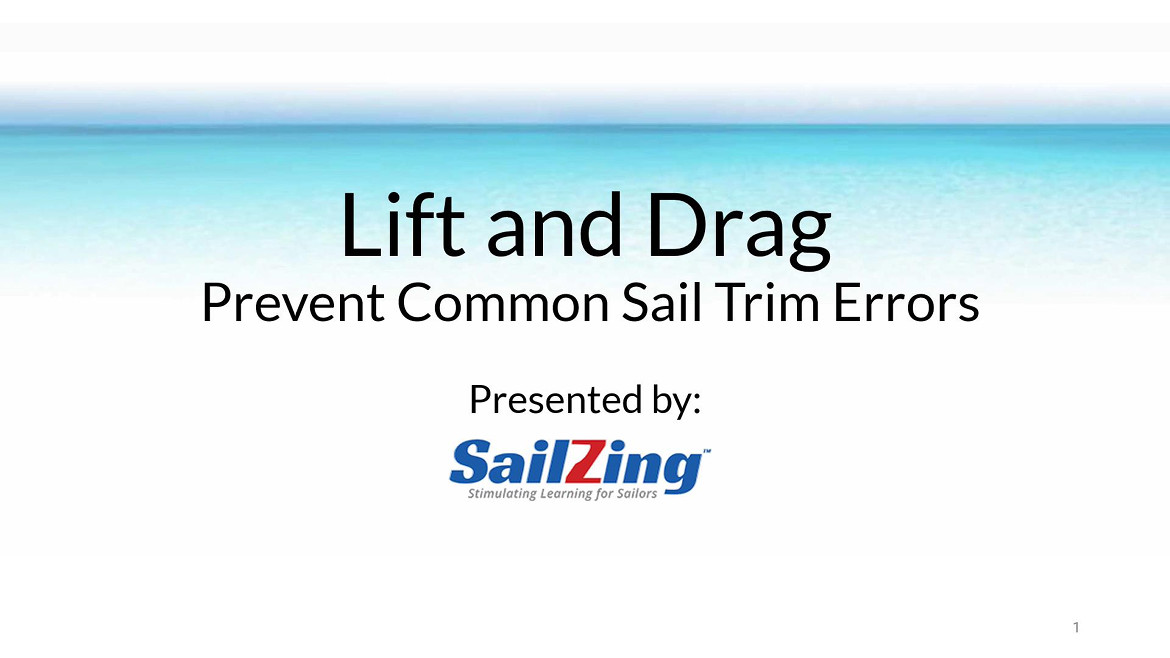Basic jib trim on a dinghy is not difficult, but beginning racers need to know a few things. In this post, we discuss the importance of the jib and a simple approach to setting the jib leads and sheeting.
Why the Jib is Important
You may be surprised to learn that the jib provides much of the driving force for your boat. Compared to the mainsail, the jib has less overall power, but its power is directed more in the forward direction. Thus, the jib produces speed without much heeling. We’ll learn more about why this happens when we study the “upwash” effect of the mainsail.
Also, the jib is more efficient than the mainsail, since the jib does not have a mast in front of it to disturb the airflow. In fact, the jib has the greatest driving force right at its luff (front edge).
Since the jib is so important, it pays to master the art of jib trim.
Two-Step Jib Trim Procedure
#1. Adjust the jib sheeting angle

The sheeting angle affects the fullness and leech shape of the jib. See the images on the right.
- A downward sheeting angle keeps the jib full and the leech firm. This is good for power in light air or in choppy water
- An aft sheeting angle flattens the jib and opens up the leech. This is good for speed in heavy air and flat water.
All dinghies allow you to adjust the sheeting angle:
- In X boats, adjust the position of the car on the jib lead tracks. Move the car forward for a downward sheeting angle and back for an aft sheeting angle.
- In 420s, adjust the mast rake. Rake the mast forward for a downward sheeting angle and back for an aft sheeting angle.
Use the sailmaker’s tuning guide to set the sheeting angle. Mark these settings on your boat.
#2. Trim the Jib Sheet
The simplest way to trim the jib sheet is to watch the ribbons on the leech. Trim in until the leech ribbons stall (disappear behind the sail), then ease until they just fly.
This doesn’t work as well in puffy conditions. Another way to check is to look at the sails on the leeward side. Compare the jib leech profile to the mainsail profile right next to the jib. The two profiles should match. Ease or trim the jib and adjust the leads to make it so.
Also refer to the tuning guide. Mark the jib sheet for the mid-range sheeting point.
Related Content
Three-part series on jib trim – Clever Pig
Mainsail Trim Series – SailZing





